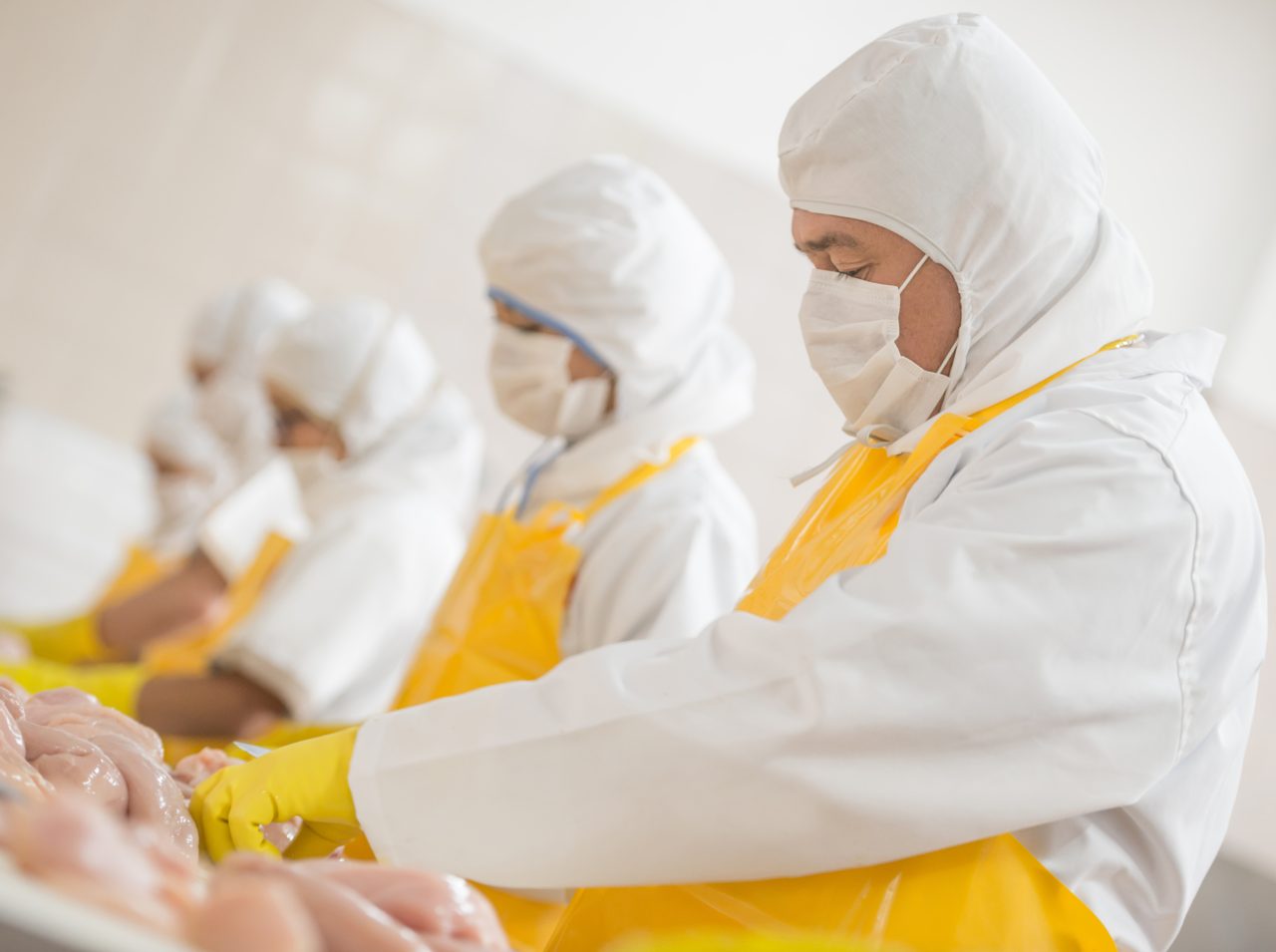worker apparel
TEch

topnatthapon/CreativeVideo+/GettyImagesPlus
legal issues
with apparel
By Elizabeth Fuhrman
Contributing writer
The fundamental law that applies to apparel for meat and poultry plant workers is the Fair Labor Standards Act (FLSA), and it addresses a couple of different issues. First is donning and doffing. The other is in one of FLSA’s provisions that essentially says that the union, the company and employer can agree that time spent in preparation for activities can be excluded from compensable time. In other words, preliminary and postliminary time by agreement can be not compensable.
It was that provision that started this idea of clothing, such as what is clothing and what is clothes changing, etc., explains Richard Alaniz, labor and employment lawyer and founder of Alaniz Law & Associates, in Houston. Over the years, the questions became more focused on what is donning and doffing and what are clothes for the purposes of someone donning and doffing? The issue, when talked about more specifically, has been widely scattered in circuit courts. For example, “Does clothing technically involve protective equipment?” has been litigated.
It was not until 2014 that the Supreme Court weighed in and gave what it considers to be a definition of donning and doffing. The definition of donning is tied to what is integral and indispensable for purposes of performing the duties or the principal activities of what the employee is hired to do. In other words, if the donning and doffing is absolutely necessary for an employee to perform the principal activities for which they are hired, then donning and doffing is compensable, Alaniz explains.
While it has been a complex issue, from the legal side it comes from FLSA in both context whether parties can agree that it is not compensable or whether it is donning and doffing for purposes of compensation, irrespective or where no agreement exists, which is normally the case with processing plants and unions.
“They don’t have those kinds of provisions,” Alaniz explains. “They are more common in other types of settings.”
Normally processing plants that are unionized do not want to deal with the provisions because the time spent donning and doffing can vary dramatically depending on the apparel and equipment involved to be worn and the type of operation, such as a beef vs. pork vs. poultry processing plant
While it is rare to see provisions in processing plants, it is still a part of the law. Normally processing plants that are unionized do not want to deal with the provisions because the time spent donning and doffing can vary dramatically depending on the apparel and equipment involved to be worn and the type of operation, such as a beef vs. pork vs. poultry processing plant. For example, a poultry processing operation might be less intensive in terms of protective equipment than a beef processing employee working on the slaughter line. Most processing plants follow the procedure that they will have employees punch in before donning all the equipment, and they will have them punch out after they have doffed it at the end of the shift to avoid any of the disputes that have arisen over the years about necessity.
Additionally, employers might add time, such as five or six minutes to a lunch period to accommodate employees taking off and putting back on their equipment. The lunch period is probably one area with donning and doffing that potential legal issues may still arise, especially in states, such as California and Pennsylvania, that have strict wage hour laws, Alaniz says. With processing plants’ increasingly diverse workforce, potential issues also may arise accommodating religious attire, but Alaniz believes the meat and poultry industry is equipped to be adaptable to employees’ religious garments.
As far as the pandemic, in terms of processing plants, no legal issues under any of the Centers for Disease Control and Prevention (CDC) or the Occupational Health and Safety Guidelines’ rules for employers adopting them of their own volition have arisen.
